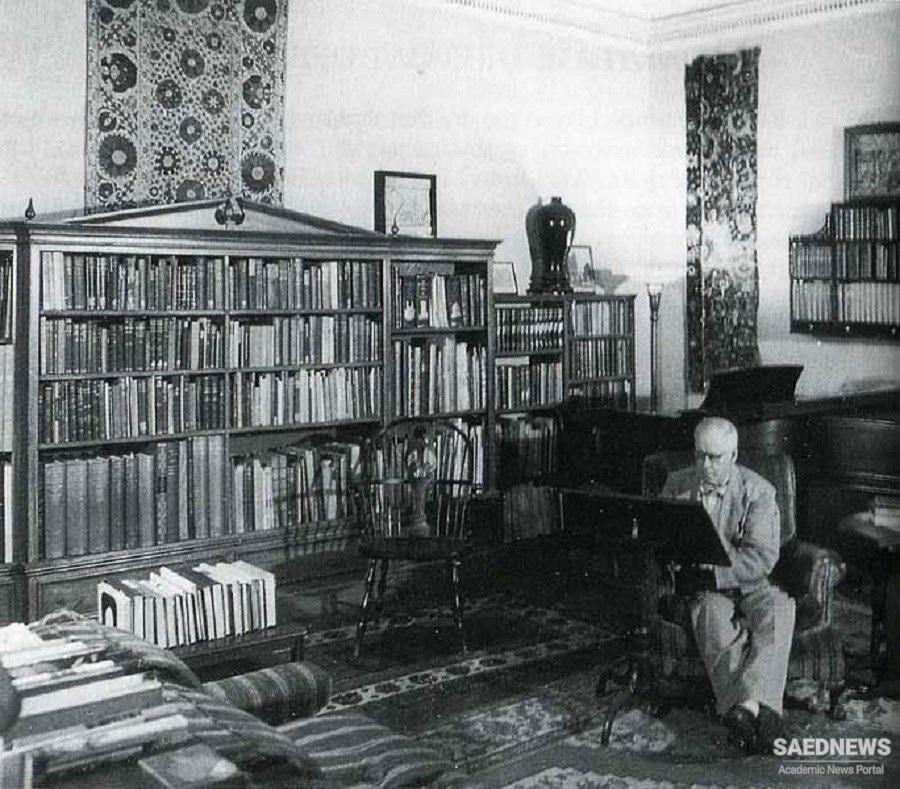Pope was also a university professor of philosophy and aesthetics, an archaeologist, photographer, museum director, interior designer, and the co-founder of an international scholarly organization. Born in Phenix in West Warwick, Rhode Island on February 7, 1881. His family was descended from English Puritans that had settled in the Boston-area. Pope graduated from Worcester Academy in 1899. He attended Brown University, and graduated with a B.A. degree in 1904 and a M.A. degree in 1906. He taught at Brown University for two years during his master's degree studies. In 1909, he married Bertha Louise Clark.
He pursued further graduate-level teaching work at Cornell University and Harvard University and again taught at Brown until 1911, when he was hired by the philosophy department at the University of California, Berkeley. During World War I, while teaching at U.C. Berkeley, he was active in the peace movement as California organizing secretary for the American Neutral Conference Committee.
He left Berkeley in December 1917 under a cloud caused by his relationship with student Phyllis Ackerman. He taught briefly at Amherst College, where his friend and former professor Alexander Meiklejohn had become president. But he soon gave up teaching philosophy and pursued his passion for Persian art, which had begun with an early interest in Oriental rugs. He had organized his first museum exhibition of Middle Eastern carpets while still an undergraduate at Brown University.
After the United States entered World War I in 1917, Pope took a job in the Personnel Division of the War Department's General Staff in Washington, D.C. He began lecturing and writing on military morale and on the assessment for promotion of officers. After the war he was among the organizers of the League of Oppressed Peoples and made speaking tours in favor of the Irish Free State. He also intensified his study of Islamic art, a field that was not yet being taught in American universities.
He was divorced from his first wife (who later became the author Bertha Damon). In 1920, Pope married his former student Phyllis Ackerman, who had completed a doctorate in philosophy at Berkeley in 1917 and shared his interest in textile arts. They had collaborated on an exhibition of the Phoebe Apperson Hearst collection in 1916 at the Palace of Fine Arts, San Francisco, and they continued to be partners in many projects for the rest of their lives, each crediting the other with greater expertise.
The Asia Institute became a part of Pahlavi University and gradually declined, especially after the Islamic revolution in 1979. Eventually, the Bulletin of the Asia Institute was revived in Michigan in 1987.
Pope began taking photographs for his Survey of Persian Art from Prehistoric Times to the Present in 1929 with a camera he had purchased in Cairo. An amateur cameraman who became, as Noël Siver describes him, 'a top-notch photographer', Pope overcame difficulties with weather conditions, opposition to his visiting mosques as a non-Muslim, and having to process all his negatives before leaving the country. He wrote about these problems in an article for Photography (London), vol. 5, no. 49 (September 1936) graphically entitled, “Killed for Photographing a Fountain! Camera as a Record of World-Famous Persian Architecture”. Exhibitions of his Persian photographs were mounted at art galleries and museums in cities such as New York, Paris, Berlin, Moscow, London, Copenhagen, Chicago, San Francisco, Jerusalem and Leningrad during the 1930s to great acclaim. His photographic legacy lives on, photographs taken in Persia and attributed to Pope, are held by the Conway Library whose archive, of primarily architectural images, is in the process of being digitised under the wider Courtauld Connects project.
In 2010 the Art Institute of Chicago, one of the museums Pope advised, presented an exhibition, "Arthur Pope and a New Survey of Persian Art", curated by Yuka Kadoi. In conjunction with the exhibition the museum held a symposium in which international scholars of Persian art discussed the life, achievements and influence of Arthur Upham Pope.
According to Noël Siver in the Encyclopaedia Iranica,
Arthur Upham Pope was a charismatic yet controversial figure. While admired by most of his contemporaries for his aesthetic sensibilities, his energy, his enthusiasm, and for the many contributions and activities described above, more recent opinion has been critical of Pope’s financial dealings including the sale of works of art to museums and important collectors, activities which he felt, having exhausted his personal means, were necessary in order to sponsor the field trips, underwrite the Survey of Persian Art, keep the underfunded Institute afloat, etc.


 Albert Ten Eyck Olmstead
Albert Ten Eyck Olmstead














































